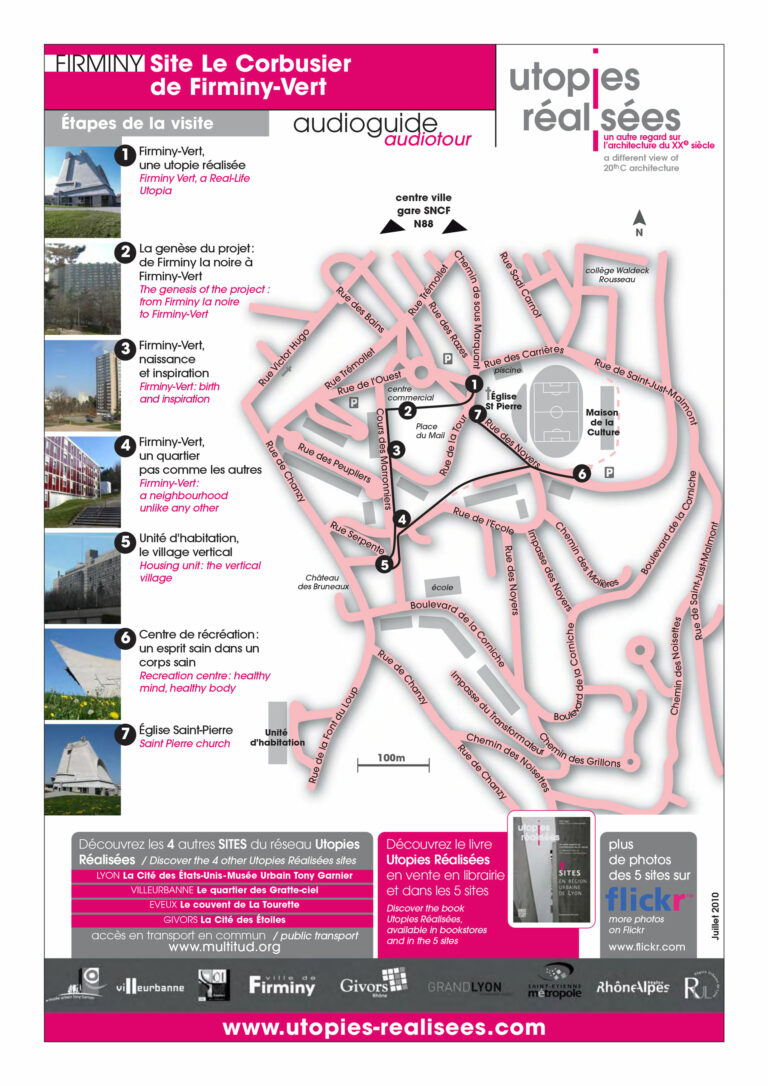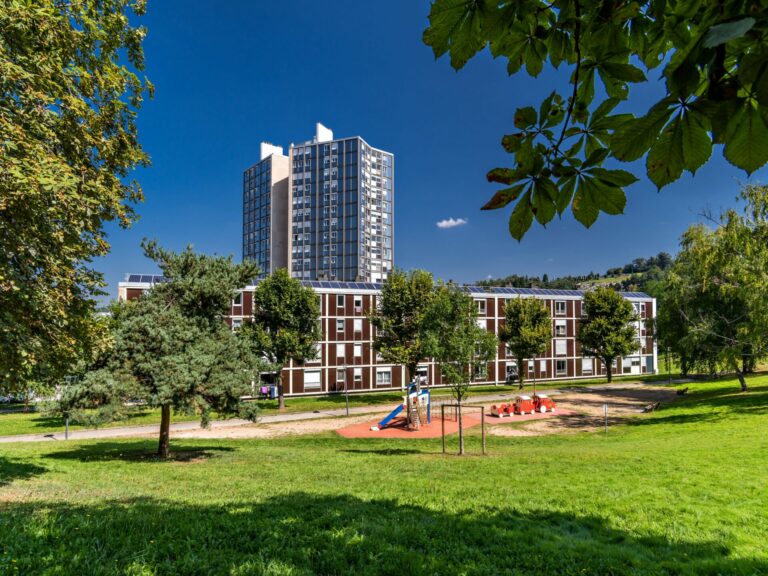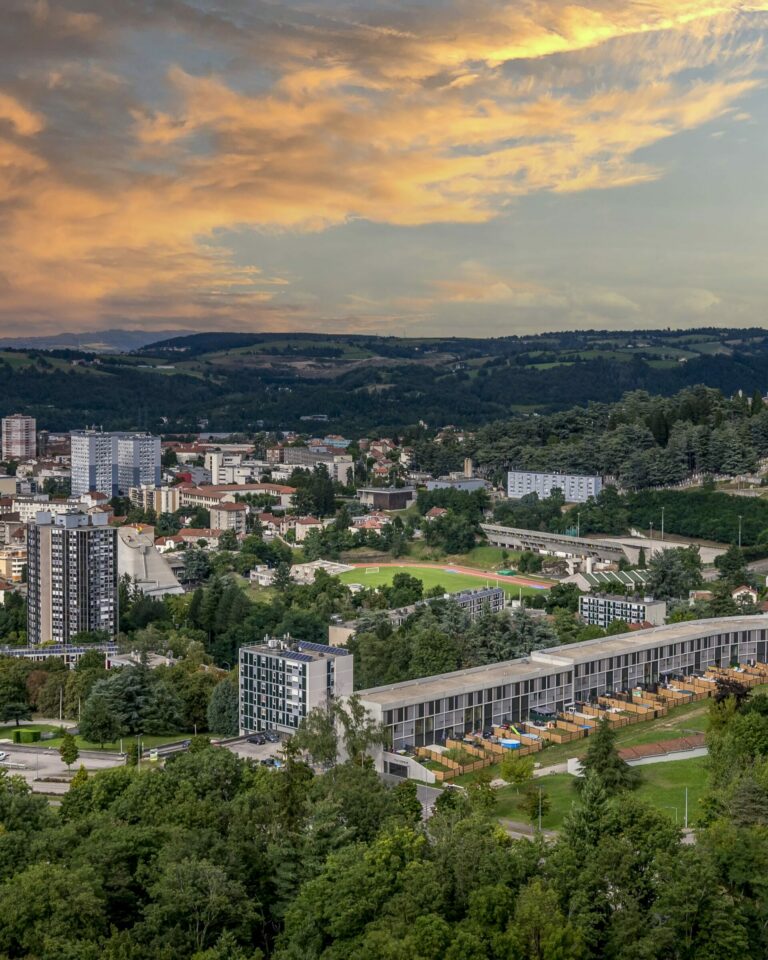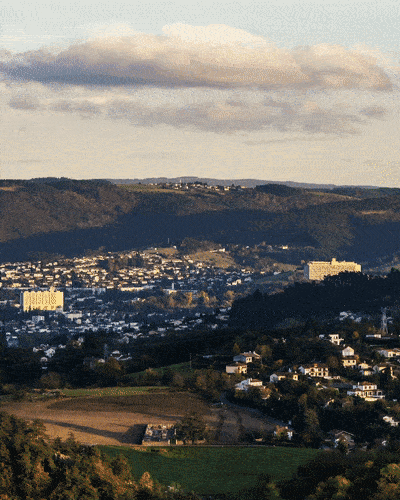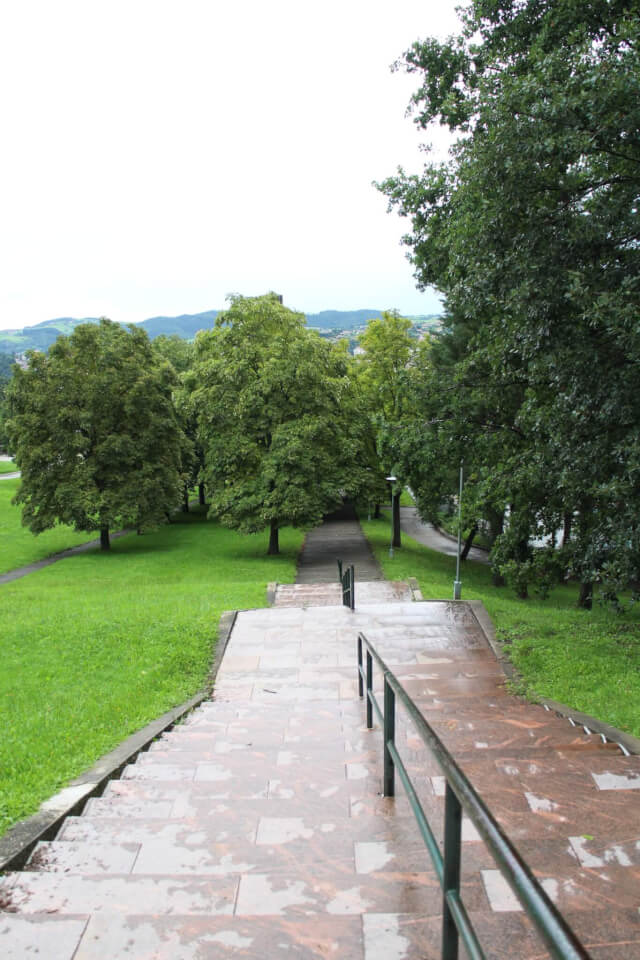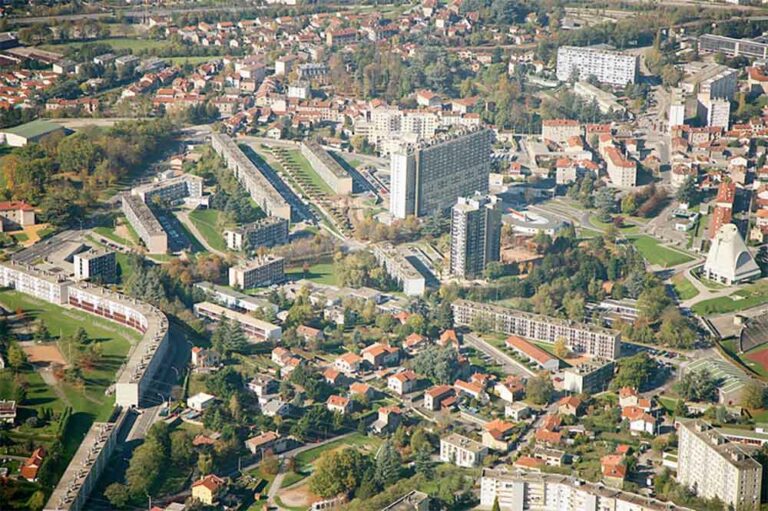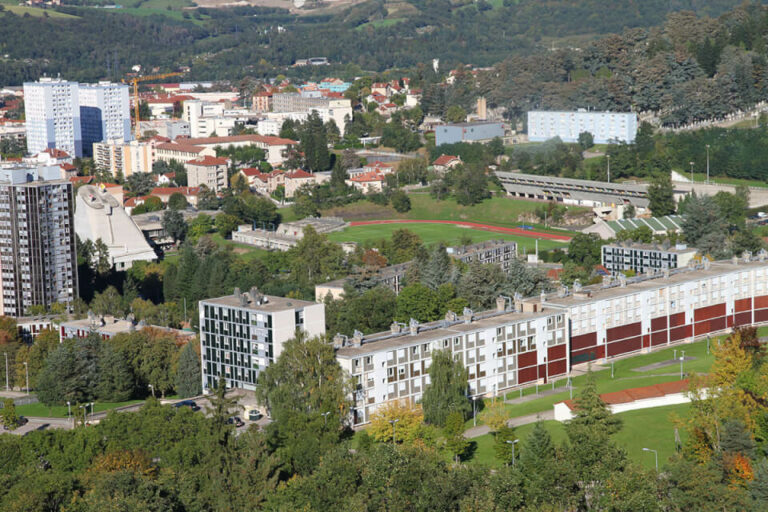Neighbourhood
The Firminy-Vert

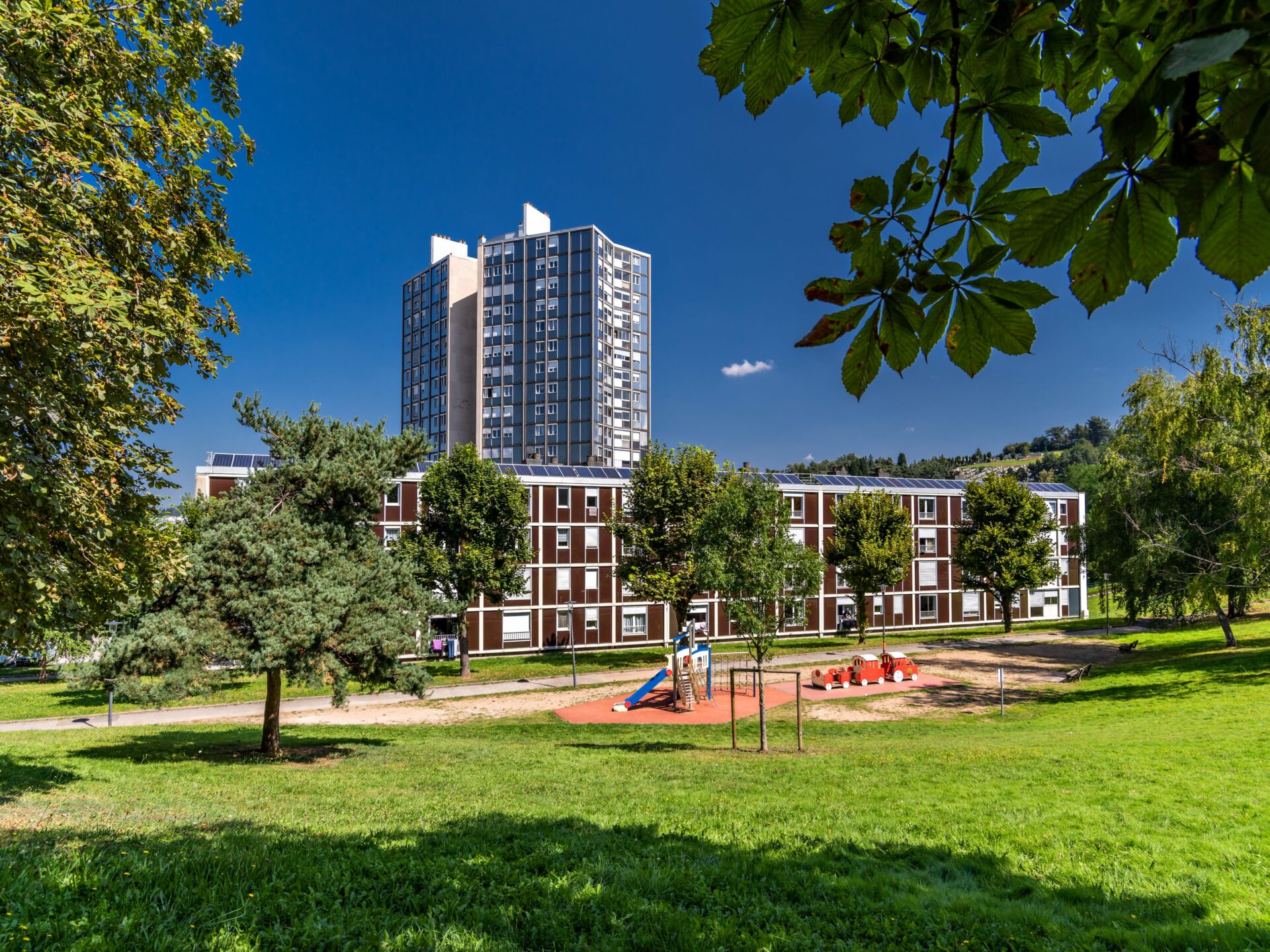
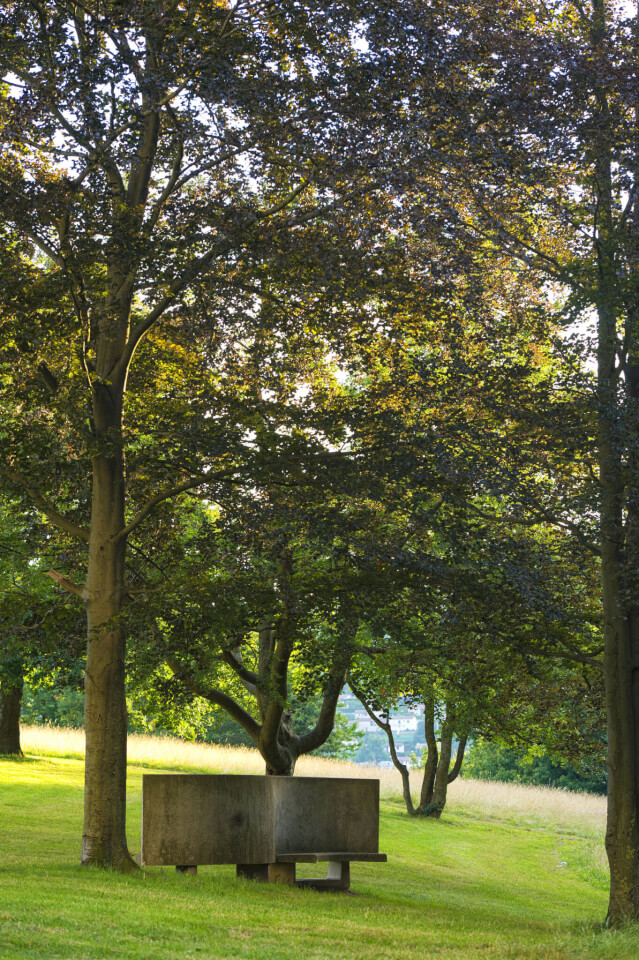
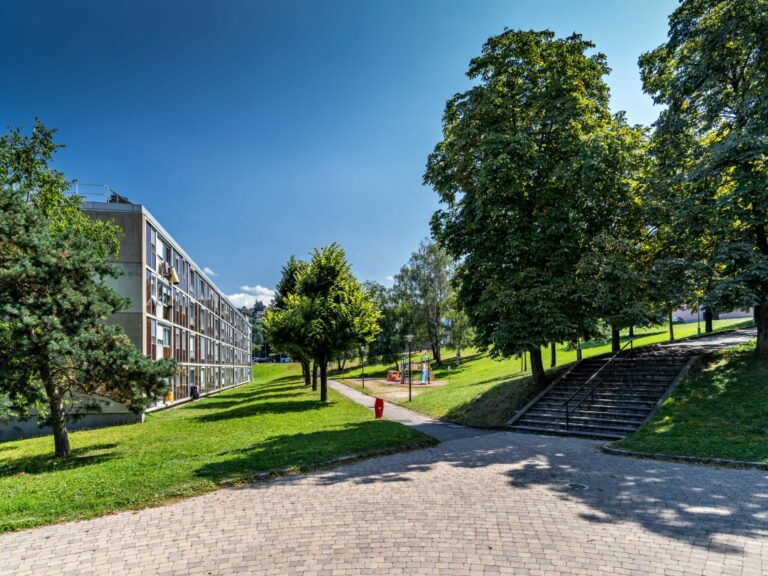
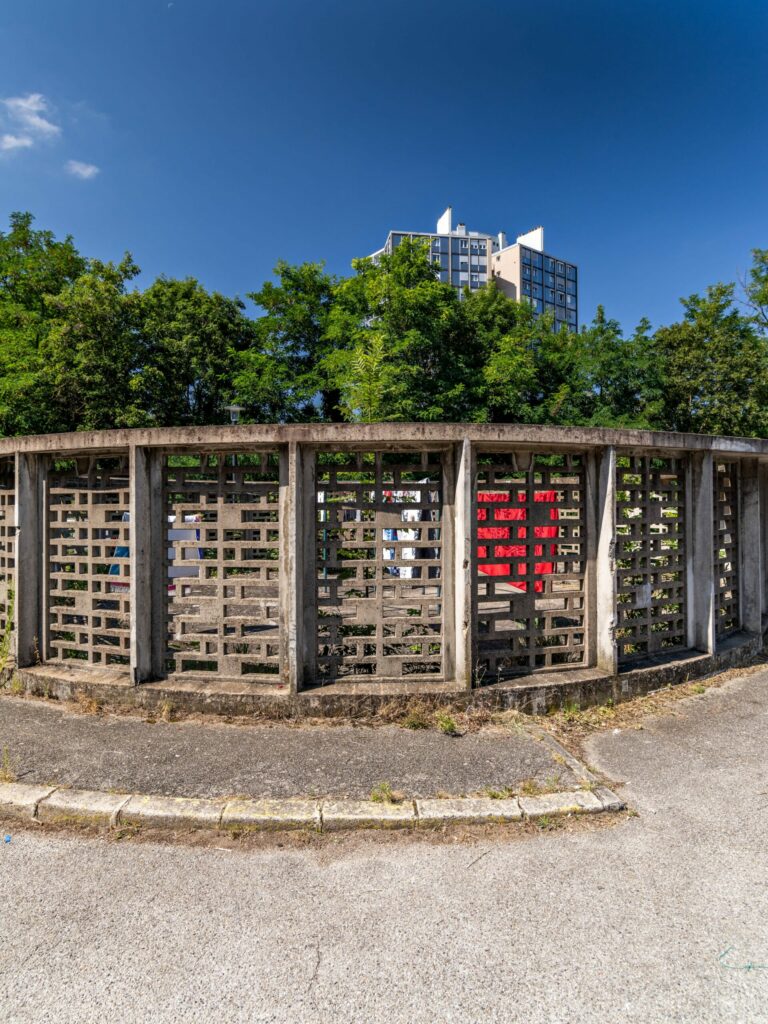
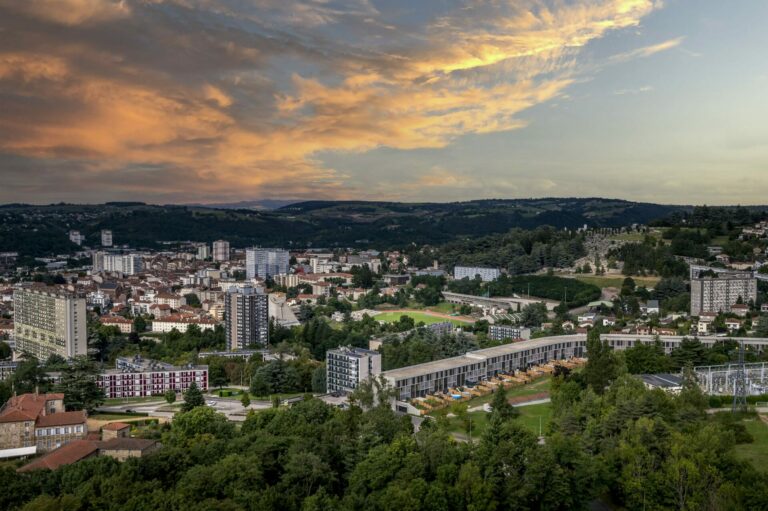

During the 19th and the 20th centuries, the population of Firminy very rapidly grew in order to provide the workforce needed by the steel industry. In a period of 160 years it went from 1 700 up to 26 000 inhabitants!
The preexisting dwellings were not sufficient and mostly overcrowded, insalubrious and ill-equipped. In 1953, half of the dwellings only consisted of one single room and one in two did not have running water.
The new mayor of Firminy, Eugène Claudius-Petit, wanted to offer the inhabitants modern and comfortables living conditions. So in 1954, he decided the rehabilitation of the town centre and the construction of a new district: « Firminy-Vert » (‘Green-Firminy’).
The conception was given to a team of architects and urban-planners: Charles Delfante, Marcel Roux, André Sive and Jean Kling. They based their work on the principles of the Athens Charter (1933) which was published by Le Corbusier in 1941: they wanted to contrast the dense urbanism of the « black Firminy », which was polluted by the industrial smokes, and to provide instead a new environment dominated by sun, space and greenery, the « essential joys » so dear to Le Corbusier. Thanks to the vertical density of the buildings, most of the ground surface is occupied by green spaces.
The 1,070 new bright and spacious flats, equipped with central heating, were very popular at the time. Collective facilities were also provided: schools, shops, sports facilities, a thermal power plant…
Firminy-Vert was awarded the Grand Prix d’Urbanisme – a French award for urban-planning – in 1961 and is still protected today as a Site Patrimonial Remarquable (remarkable heritage site).
As soon as 1954 Le Corbusier worked on three other facilities to complete this new neighbourhood: The Cultural Centre, the stadium and Saint-Peter’s Church.
Did you know?
The first French automatic launderettes were built here in Firminy-Vert!
Eight
sensitive
experiences
to live…

